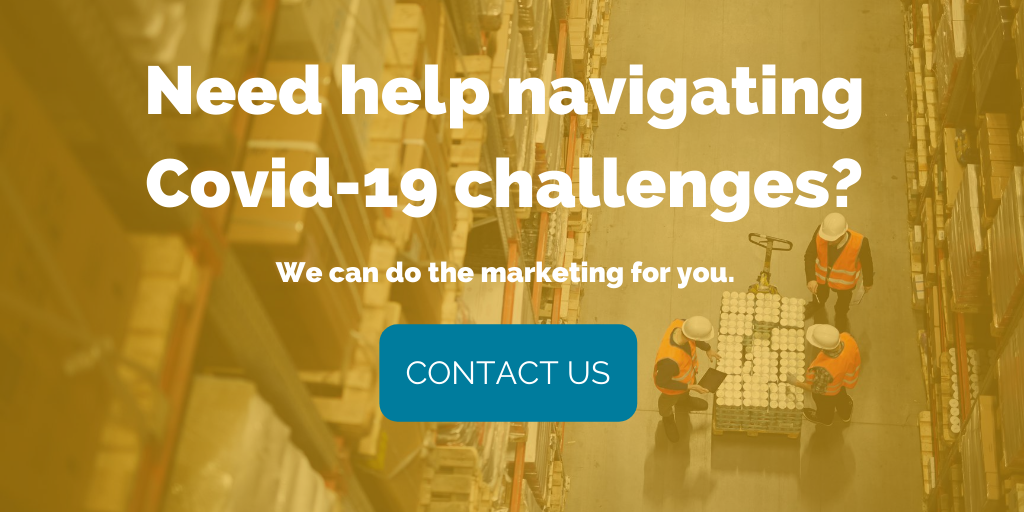
by Jennifer Hart Yim | Jan 29, 2025 | Logistics, Paid Advertising
Having a strong digital presence is no longer optional. Pay-Per-Click (PPC) advertising is a powerful tool for logistics companies looking to quickly generate quality leads and expand their client base.
Here, we walk you through everything you need to know about implementing a successful PPC strategy for your logistics business.
Why PPC Matters for Logistics Companies
The logistics industry operates in a highly competitive space where timing and visibility are crucial. PPC advertising offers several unique advantages for logistics companies:
- Immediate visibility in search results when potential clients are actively searching for logistics services
- Precise targeting capabilities to reach specific industries, locations, and decision-makers
- Measurable ROI through advanced tracking and analytics
- Flexibility to adjust campaigns based on seasonal demands and market changes
Key PPC Strategies for Logistics Companies
1. Strategic Keyword Selection
Success in PPC begins with targeting the right keywords. For logistics companies, focus on:
Transportation-specific terms:
- “freight forwarding services”
- “international shipping solutions”
- “supply chain management”
- “warehousing and distribution”
Location-based keywords:
- “[city] logistics company”
- “shipping services in [region]”
- “local freight forwarding”
Service-specific terms:
- “temperature-controlled shipping”
- “hazmat transportation”
- “last-mile delivery solutions”
2. Creating Compelling Ad Copy
Your ad copy needs to address the specific pain points of your target audience while highlighting your unique value proposition. Consider these elements:
- Include relevant certifications and compliance standards
- Emphasize your experience and track record
- Highlight specialized services or equipment
- Showcase your geographic coverage
- Include clear calls-to-action (CTAs)
3. Landing Page Optimization
The success of your PPC campaigns heavily depends on your landing pages. Ensure they:
- Load quickly and are mobile-responsive
- Feature clear value propositions above the fold
- Include trust indicators (certifications, client logos, testimonials)
- Offer multiple contact options
- Contain relevant content that matches the ad’s promise
4. Advanced Targeting Techniques
Maximize your ROI by utilizing advanced targeting options:
Geographic Targeting:
- Target specific service areas
- Adjust bids based on location performance (this one has proven to be particularly successful for our clients)
- Focus on high-value markets
Audience Targeting:
- Create custom audiences based on website visitors
- Target similar audiences to your existing clients
- Depending on your services, you may be able to use in-market audiences to target
Device Targeting:
- Optimize campaigns for both desktop and mobile users
- Adjust bids based on device performance
- Create device-specific ad copy
Measuring and Optimizing Your PPC Campaigns
Key Performance Indicators (KPIs)
Track these essential metrics to measure campaign success:
- Click-Through Rate (CTR)
- Conversion Rate
- Cost Per Lead (CPL)
- Return on Ad Spend (ROAS)
- Quality Score
- Average Position
Optimization Strategies
Continuously improve your campaigns by:
- Regularly reviewing search term reports to identify new keywords
- A/B testing ad copy and landing pages (even changing one word could improve your CTR)
- Adjusting bids based on performance data
- Optimizing for mobile experience
- Refining audience targeting based on performance data
Common PPC Mistakes to Avoid
Please, don’t do these. These things waste your budget:
- Neglecting negative keywords
- Using overly broad match types
- Ignoring mobile optimization
- Not tracking conversions properly
- Failing to test ad variations
- Overlooking quality score optimization
Budget Planning and Management
Effective budget management is crucial for PPC success:
- Start with a conservative budget to gather data
- Allocate more budget to top-performing campaigns
- Consider seasonal trends in the logistics industry
- Set aside budget for testing new approaches
- Monitor and adjust bids regularly
Future Trends in Logistics PPC
Wanna be with the cool kids? Stay ahead of the curve by testing these emerging trends:
- AI-driven automation in campaign management (yes, even daily budget management)
- Voice search optimization
- Enhanced audience targeting capabilities
- Integration with CRM systems
Conclusion
Remember that PPC is not a “set it and forget it” solution. Regular monitoring, testing, and optimization are essential for maintaining and improving campaign performance over time.
Need help with your logistics company’s PPC campaigns? Contact our team.
Read more:

by Jennifer Hart Yim | Jan 9, 2025 | Logistics
Trying to figure out which logistics trade shows and events you should attend in 2025? You’re in the right place! Whether you’re a logistics veteran or planning your first industry event, this list will help you choose the conferences that are actually worth your time (and budget). Below you’ll find all the major shows happening across North America, Europe, and Asia – complete with dates, locations, and an insider’s look on what makes each one special.
Q1 2025 Conferences
- Date: February 10-12, 2025
- Location: Las Vegas, Nevada
- Why Attend: As the first major logistics trade show and event of 2025, Manifest brings together supply chain technology leaders and innovators to showcase the latest in logistics automation, robotics, and AI solutions. The conference is particularly valuable for those interested in emerging technologies and startup solutions in the logistics space.
Learn more about Manifest Vegas >>
RILA Link 2025 Retail Supply Chain Conference
- Date: February 16-19, 2025
- Location: Orlando, Florida
- Why Attend: Essential for retail supply chain professionals, RILA Link focuses on retail-specific logistics challenges and solutions, featuring senior executives from major retailers sharing their insights and strategies. This conference is particularly valuable for networking with retail industry leaders and learning about retail-specific supply chain innovations.
Learn more about RILA >>
TPM Annual Conference
- Date: March 2-5, 2025
- Location: Long Beach, California
- Why Attend: The premier conference for international container shipping, TPM provides unparalleled networking opportunities with ocean carriers, ports, and international logistics providers. This event is crucial for understanding global shipping trends and forming strategic partnerships in the maritime logistics sector.
Learn more about TPM >>
2025 Food Shippers of America Conference
- Date: March 2-5, 2025
- Location: Palm Desert, California
- Why Attend: Focused exclusively on food logistics and transportation, this conference addresses unique challenges in the food supply chain, including cold chain management, food safety compliance, and sustainable food transportation solutions.
Learn more about Food Shippers of America >>
LogiMat
- Date: March 11-13, 2025
- Location: Stuttgart, Germany
- Why Attend: Europe’s largest intralogistics exhibition showcases the latest innovations in material handling, warehouse automation, and supply chain software. This event is particularly valuable for those interested in European market trends and automation technologies.
Learn more about LogiMat >>
ProMat
- Date: March 17-20, 2025
- Location: Chicago, Illinois
- Why Attend: One of North America’s largest manufacturing and supply chain trade shows, ProMat features cutting-edge solutions in manufacturing, distribution, and supply chain equipment. The event includes extensive educational sessions and demonstrations of the latest material handling technologies.
Learn more about ProMat >>
LogiChem EU 2025
- Date: March 18-20, 2025
- Location: Rotterdam, Netherlands
- Why Attend: The leading chemical logistics and supply chain conference in Europe, LogiChem focuses on challenges specific to chemical industry logistics, including safety regulations, sustainability, and specialized transportation requirements.
Learn more about LogiChem EU >>
Q2 2025 Conferences
SITL 2025
- Date: April 1-3, 2025
- Location: Paris, France
- Why Attend: International Week of Transport and Logistics (SITL) is France’s premier logistics event, bringing together European logistics professionals to discuss innovations in transportation, warehouse management, and supply chain optimization.
Learn more about SITL >>
The Logistics World Summit & Expo
- Date: April 2-3, 2025
- Location: Mexico City, Mexico
- Why Attend: The largest logistics event in Latin America, offering insights into regional markets and connecting professionals across the Americas. Particularly valuable for understanding Latin American logistics trends and opportunities.
Learn more about The Logistics World Summit & Expo >>
TIA 2025 Conference
- Date: April 9-12, 2025
- Location: San Antonio, Texas
- Why Attend: The Transportation Intermediaries Association’s annual conference is essential for freight brokers and 3PLs, offering insights into transportation market trends and brokerage best practices.
Learn more about the TIA 2025 Conference >>
The 2025 IWLA Convention & Expo
- Date: May 4-6, 2025
- Location: Tucson, Arizona
- Why Attend: The International Warehouse Logistics Association’s annual event brings together warehouse operators and 3PLs to discuss industry trends, technology innovations, and operational best practices.
Learn more about the IWLA Convention >>
LogiSYM Asia Pacific 2025
- Date: May 20-21, 2025
- Location: Singapore
- Why Attend: The premier logistics and supply chain conference in Asia Pacific, offering insights into regional markets and connecting professionals across the APAC region.
Learn more about LogiSYM Asia Pacific >>
Home Delivery World 2025
- Date: May 21-22, 2025
- Location: Nashville, Tennessee
- Why Attend: Focused on last-mile delivery and e-commerce logistics, this conference addresses the growing challenges and opportunities in retail delivery operations.
Learn more about Home Delivery World >>
transport logistic
- Date: June 2-5, 2025
- Location: Munich, Germany
- Why Attend: One of Europe’s largest transport and logistics trade fairs, featuring comprehensive coverage of global logistics trends and innovations across all transport modes.
Learn more about transport logistic >>
TMSA ELEVATE 2025
- Date: June 8-10, 2025
- Location: Austin, Texas
- Why Attend: Focused on marketing and sales strategies in transportation and logistics, this conference helps professionals better position and promote their services in the market.
Learn more about TMSA Elevate >>
Q3 2025 Conferences
ASCM CHAINge 2025
- Date: September 9-10, 2025
- Location: Columbus, Ohio
- Why Attend: The Association for Supply Chain Management’s conference focuses on supply chain transformation and innovation, featuring case studies and practical implementation strategies.
Learn more about ASCM CHAINge >>
North American Supply Chain Executive Summit
- Date: September 22-24, 2025
- Location: Las Vegas, Nevada
- Why Attend: A premier gathering of supply chain executives focusing on strategic planning, digital transformation, and industry leadership.
Learn more about the North American Supply Chain Executive Summit >>
Q4 2025 Conferences
Council of Supply Chain Management Professionals (CSCMP) EDGE 2025
- Date: October 5-8, 2025
- Location: National Harbor, Maryland
- Why Attend: CSCMP’s annual conference is one of the industry’s largest events, featuring comprehensive educational sessions, impressive keynote speakers, and extensive networking opportunities.
Learn more about CSCMP EDGE >>
Intermodal Europe 2025
- Date: October 21-23, 2025
- Location: Barcelona, Spain
- Why Attend: The leading exhibition and conference for companies associated with container and intermodal industries worldwide, essential for understanding global container logistics trends.
Learn more about Intermodal Europe >>
FreightWaves Future of Freight Festival
- Date: November 4-6, 2025
- Location: Chattanooga, Tennessee
- Why Attend: A dynamic event combining technology demonstrations, market insights, and networking opportunities focused on the future of freight transportation. While you’re in Chattanooga, you must eat a Moon Pie. You can thank me later.
Learn more about FreightWaves Future of Freight >>
Frequently Asked Questions
Which are the biggest logistics conferences in 2025?
The largest events by attendance are CSCMP EDGE (October 5-8), ProMat (March 17-20), and transport logistic Munich (June 2-5). These conferences typically draw thousands of attendees and feature hundreds of exhibitors.
What are the best European logistics conferences in 2025?
Key European events include LogiMat in Stuttgart (March 11-13), Transport logistic in Munich (June 2-5), and Intermodal Europe in Barcelona (October 21-23). You’ll find unique insights into European logistics trends and regulations.
Which conferences focus on supply chain technology?
Manifest (February 10-12) and ProMat (March 17-20) are particularly strong in showcasing new supply chain technologies. These events feature extensive exhibits of robotics, automation, and software solutions.
Are there any virtual attendance options?
Many conferences are expected to offer hybrid attendance options, combining in-person and virtual experiences. Check individual conference websites closer to the event dates for specific virtual attendance offerings and registration details.
Tips for Attending Logistics Conferences
1. Planning Your Conference Schedule
Start planning at least 3-4 months in advance to take advantage of early bird registration rates and ensure accommodation availability. Many conferences offer significant discounts for early registration.
2. Maximizing Networking Opportunities
Most conferences offer dedicated networking sessions and mobile apps to connect with other attendees. Download the conference app in advance and set up your profile to make the most of networking opportunities.
3. Budget Considerations
Conference costs typically include:
- Registration fees ($1,000-$2,500 on average)
- Travel and accommodation
- Additional workshop or certification fees
- Entertainment and networking events
See you all out and about this year!
The 2025 logistics conference calendar offers something for everyone. Whether you’re interested in technology, retail logistics, or international shipping, there’s a conference tailored to your needs. Remember to register early for the best rates and check back regularly for updates about virtual attendance options and agenda details. Many conferences will update their programs throughout the year to address emerging industry trends and market challenges.
Did we miss your favorite one? Let us know and we’ll add it to the list!
Need help with your trade show strategy? Let us know.
Read more:
Last updated: January 2025. Conference details subject to change. Please verify dates and locations with event organizers before making travel arrangements.
Important note: MODEX has no event scheduled for 2025. MODEX will next take place in April 2026.

by Jennifer Hart Yim | Jan 8, 2025 | Marketing, Packaging
We’re showing you exactly how packaging companies we’re working with are using account-based marketing (ABM) to increase market share, shorten sales cycles, and win more strategic accounts. Consider this a packaging professional’s blueprint for target account success.
What is Account-Based Marketing for the Packaging Industry?
Account-based marketing is a strategic approach that focuses marketing and sales resources on specific high-value accounts rather than broad market segments. This means targeting key accounts with personalized campaigns that address their unique packaging challenges, sustainability goals, and innovation needs.
Here’s an example of what that could look like for a packaging marketer:
If consumers in Brazil begin demanding smaller milk carton sizes to reduce food waste, packaging companies might use traditional marketing to broadly promote “flexible filling solutions” to all dairy manufacturers. Instead, an aseptic packaging provider could use account-based marketing to stand out and create a highly targeted campaign for Nestlé. This campaign could specifically address Nestlé’s need to fill multiple carton sizes (500ml, 750ml, and 1000ml) for their Molico and Ninho UHT milk brands on a single production line.
Unlike traditional marketing, ABM delivers:
- 2x higher engagement rates with technical decision-makers
- 42% reduction in packaging qualification cycles
- 27% increase in contract values
- 35% improvement in customer retention
How to Build a Winning ABM Strategy
1. Define Your Ideal Customer Profile (ICP)
Success in ABM starts with identifying the perfect packaging customer. Here are some ways you can start to categorize their characteristics:
Industry Focus:
- Food and beverage manufacturers
- Pharmaceutical companies
- Consumer packaged goods (CPG)
- Industrial products
- Chemical companies
- E-commerce retailers
- Automotive suppliers
Operational Characteristics:
- Production volumes and capacity
- Geographic footprint
- Technical requirements
- Regulatory frameworks
- Sustainability commitments
Business Indicators:
- Annual packaging spend
- Growth trajectory
- Innovation appetite
- Quality standards
- Compliance needs
2. Select and Prioritize Target Accounts
Develop a tiered approach to account selection:
Tier 1: Strategic Accounts
- Major CPG companies
- Global pharmaceutical manufacturers
- Leading food and beverage brands
Tier 2: Growth Accounts
- Regional packaging buyers
- Emerging brands
- Contract manufacturers
Tier 3: Scale Accounts
- Local manufacturers
- Specialty product makers
- Start-up brands
3. Map the Packaging Decision-Making Unit
Here’s where you’ll determine who you’ll be targeting. Identify and engage with those key stakeholders. They could be part of any of the following functions:
Technical Team
- Packaging Engineers
- R&D Directors
- Quality Assurance Managers
Commercial Team
- Procurement Directors
- Supply Chain Managers
- Sustainability Officers
Executive Level
- Operations Directors
- Innovation Leaders
- C-Suite Decision Makers
Content for Account-Based Marketing for the Packaging Industry
Technical Content
Develop materials that showcase your packaging expertise:
- Barrier performance studies comparing EVOH vs. metallized films for snack packaging
- Technical specifications for child-resistant pharmaceutical blister packs
- FDA compliance guides for direct-food-contact packaging materials
- Innovation roadmaps for smart packaging with NFC technology
- Sustainability impact reports on PCR content in HDPE bottles
Commercial Content
Create content that drives packaging business decisions:
- Cost calculators comparing glass vs. PET bottles for beverage lines
- Production efficiency studies for servo-driven cartoning machines
- Risk analyses of aluminum foil supply chain disruptions
- Market trends in mono-material flexible packaging adoption
- Benchmarks of European vs. US sustainable packaging regulations
Implementing Your Packaging ABM Program
Essential Tools and Technologies
Invest in the right technology stack:
- ABM platforms for account targeting
- CRM systems for relationship management
- Marketing automation for personalization
- Analytics tools for performance tracking
- Technical collaboration platforms
Multi-Channel Engagement Strategy
Coordinate your outreach across channels:
- Technical consultations
- Innovation workshops
- Sustainability forums
- Digital demonstrations
- Industry events
- Direct mail campaigns
Measuring the Success of Account-Based Marketing for the Packaging Industry
Key Performance Indicators
Track these critical metrics:
- Account engagement scores
- Technical trial conversion rates
- Sales cycle duration
- Contract win rates
- Customer lifetime value
- Innovation adoption rates
ROI Calculation Framework
Measure your ABM investment returns:
- Cost per account engagement
- Revenue per target account
- Marketing qualified account (MQA) conversion
- Technical qualification success rates
- Long-term contract values
Common ABM Challenges (+ Solutions) Packaging Professionals Face
Challenge 1: Long Technical Qualification Cycles
Example solutions:
- Provide rapid prototyping of thermoformed packages using 3D-printed molds
- Offer accelerated shelf-life testing for new barrier materials
- Supply preliminary migration testing data for food-contact materials
- Create digital twins of packaging lines for virtual testing
Challenge 2: Multiple Stakeholder Alignment
Example solutions:
- Develop sustainability scorecards that satisfy both procurement and ESG teams
- Create ROI models that connect packaging automation with labor savings
- Build material transition roadmaps that align with corporate sustainability goals
- Provide comparative LCA (Life Cycle Assessment) data for different packaging options
Challenge 3: Complex Approval Processes
Example solutions:
- Map decision workflows
- Create milestone-based content
- Offer phased implementation plans
Top Tips for ABM Success
- Start with a pilot program focusing on 5-10 key accounts
- Invest in technical expertise and support
- Align sales and technical teams early
- Focus on sustainability and innovation
- Measure and adjust continuously
How to Get Started
- Assess your current account relationships
- Identify your top 10 target accounts
- Map stakeholders and decision processes
- Develop your technical content strategy
- Implement tracking and measurement systems
Questions We’ve Gotten from Packaging Professionals About ABM
Q: Can you give me an example of how ABM is different from traditional packaging marketing?
A: While traditional marketing might broadly promote your shrink sleeve capabilities to all beverage companies, ABM would create a targeted campaign specifically for Coca-Cola’s Southeast Asia expansion, addressing their specific need, sustainability, and localization requirements. This focused approach delivers personalized engagement at every level of their decision-making process.
Q: What budget should packaging companies allocate to ABM?
A: The most successful ABM programs are funded at about 15-25% of the total marketing budget. For example, a flexible packaging manufacturer might allocate $200,000 annually to target 10 key CPG accounts, with roughly $20,000 per account for technical content development, prototype creation, and specialized testing programs.
Q: How long does it take to see results?
A: You’ll start to see the needle move within 3-6 months. For example, you might notice increased participation in packaging innovation workshops or material qualification trials. Significant revenue impact typically occurs within 9-12 months, as seen in new packaging format adoptions or multi-year supply agreements.
Q: Which metrics matter most?
A: Focus on account engagement scores, technical qualification rates, sales cycle duration, and contract values.
Q: How can smaller packaging companies implement ABM?
A: Start with a focused program targeting 3-5 key accounts and leverage digital automation tools for efficiency and AI tools to scale.
Want to change how your packaging company targets high-value prospects and land major accounts? We’re happy to help you get started. Get in touch.
Read more:

by Jennifer Hart Yim | Jan 6, 2025 | Data/Analytics, Marketing, Strategy
The C-suite demands more than vanity campaign metrics—they require clear evidence of marketing’s contribution to revenue growth, profitability, and market share expansion. The most successful supply chain marketers have mastered a crucial skill: translating marketing activities into the language of financial outcomes.
Bridging the Gap Between Marketing and Finance
How can you be sure, really sure, that you are demonstrating concrete business value to the C-suite? While traditional marketing metrics like engagement rates and lead generation are always top of mind for marketing folks, securing executive support is really about speaking the language of financial outcomes and business growth.
Why Supply Chain Marketing Metrics Need a Financial Bent
The disconnect between marketing activities and financial outcomes often creates skepticism among executive leadership. Marketers must change their reporting from activity-based metrics to revenue-focused outcomes. This shift isn’t just about changing terminology—it’s about fundamentally reframing how marketing creates measurable business value.
How to (Effectively) Demonstrate Supply Chain Marketing ROI
1. Prioritize ROI Over Activity Metrics
Transform your reporting approach from campaign-centric to outcome-focused. Instead of: “Our packaging technology campaign reached 100,000 decision-makers.” Say: “Our targeted campaign generated $3.2M in qualified pipeline opportunities, with a 4:1 return on marketing investment.”
2. Connect Supply Chain Marketing Metrics to Revenue
Develop clear links between marketing activities and financial outcomes:
- Calculate customer acquisition cost (CAC) reduction from targeted marketing campaigns
- Measure increases in average contract value from enhanced positioning
- Track acceleration in sales cycle length from marketing-qualified leads
3. Demonstrate Long-term Value Creation
Articulate how marketing investments drive sustainable competitive advantages:
- Document improvements in customer lifetime value
- Track market share gains in strategic segments
- Measure pricing power improvements from brand building
Get Started: Steps for Calculating Supply Chain Marketing ROI
1. Establish Financial Baseline Metrics
Along with your existing supply chain marketing metrics, begin by tracking key financial data:
- Current customer acquisition costs
- Average contract values by segment
- Sales cycle duration
- Customer retention rates
2. Implement Revenue Attribution Models
Create systems to track marketing’s direct impact on:
- Pipeline generation
- Win rates
- Revenue acceleration
- Market share growth
3. Develop A Financial Reporting Framework
Structure regular reporting around business outcomes:
- Quarter-over-quarter revenue impact
- Year-over-year market share gains
- Customer lifetime value improvements
- Return on marketing investment (ROMI)
Making Your Case to Leadership
Frame the Narrative
Present marketing initiatives in terms of business impact: You could say: “Our new campaign focused on electronics procurement professionals has:
- Reduced customer acquisition costs in that sector by 18%
- Increased deal size by 25%
- Accelerated sales cycles by 30 days
- Improved customer retention by 15%”
Connect Supply Chain Marketing Metrics to Strategic Goals
Align marketing metrics with company objectives: “Our thought leadership content program has positioned us as the leader in sustainable supply chain solutions, directly supporting our goal of capturing 30% market share in the green supply chain segment by 2027.”
Show Value by Becoming a Strategic Business Partner
Supply chain marketing leaders should think like a CFO to secure executive buy-in. By adopting this mindset, marketers can transform their role from cost center to strategic growth driver. This approach not only secures executive buy-in but also elevates marketing’s position as a crucial driver of business success.
Related posts:

by Fronetics | May 13, 2020 | Blog, Covid-19, Current Events, Marketing, Strategy, Supply Chain
With a main lead-generating source canceled or postponed, trade show contingency plans take on increased importance.
The Supply Chain USA 2020 summit in Chicago is a flagship event. Considered a must-attend gathering for strategic decision-making, it draws 1,000 supply chain and logistics leaders for three “unmissable days.”
For executives like Tom Schmitt, chairman and CEO of Forward Air Corp., it is the type of event that generates so many “relevant conversations” that he says it is like getting the value of nine business trips for the price of one.
This year, though, those who planned to head to Supply Chain USA, June 16-18, will need to start working on their trade show contingency plans. The fallout of the coronavirus pandemic has forced EFT, the organizer, to postpone and a new date has yet to be determined.
And — as you have likely experienced yourself — the summit attendees are hardly alone. Within weeks of the Covid-19 outbreak, 1 million people saw their corporate event plans scuttled. MODEX in Atlanta, Ga., in early March, turned out to be one of the last hurrahs for supply chain professionals — half of the pre-registered attendants were no-shows — before cancellations and postponements turned the supply chain conference circuit on its head.
Now, supply chain pros wonder, “What’s next?”
Covid-19 forces domino of cancellations, postponements
A look at this list gives you an idea of the impact: (Check event websites for the latest info)
Trade show contingency plans need to fill big lead generation gap
For supply chain and logistics companies, the cancellations and uncertainty surrounding the postponed shows are no small matters. Trade shows are one of the largest lead generators for B2B demand generation.
Technology and service providers spend an average of 11% of the marketing programs budget on third-party tradeshows, according to the Gartner 2019 Tech Marketing Benchmarks Survey. And the investment seems to be paying off, as 18% of the same companies rank events as the best-performing calls-to-action of marketing-qualified leads, second only to content assets.
Another survey, by MarketingCharts, found software and technology companies cite events as the most effective demand-generation tactic for attracting top-of-the-funnel qualified leads.
In other words, the need to develop trade show contingency plans is quite urgent.
Trend watch: What some companies are doing
So, what actions have some of your peers taken to date to make up for the loss of face-to-face networking?
Some trends are emerging, including:
E-learning: To ensure business continuity while adhering to stay-at-home policies, DC Velocity notes e-learning has taken on increased significance. The establishment of interactive online courses allows companies to conduct specialist training sessions on complex topics that attendees can complete at their own pace. (E-learning is usually a time-consuming and fairly costly endeavor but can serve its purpose when the audience already has an invested interest in the company. For quick engagement, we recommend webinars.)
Dropped subscription fees: On-premise platforms that run on business servers are not conducive to remote work — and vendors of cloud-based supply chain software have seized the market opening. For the sake of lead generation, a range of companies have dropped subscription fees, offering free access to products like transportation management, route optimization, last-mile visibility, and remote robotic operations. One example: InMotion Global, Inc., has made its cloud-based platform, AscendTMS, available at no cost to any company needing help for 30 days.
Quick actions matter
The fact more people are spending more time than usual on their computers provide an opening for companies that can leverage trade show contingency plans. Gartner, for one, advises teams must be prepared to quickly pivot marketing strategy and build campaigns to address this shift.
Immediately after a cancellation or postponement, actions may include:
- Replace all scheduled event meetings with online meetings within 24 hours.
- Create a webinar series that homes in on the key messages you had planned to convey.
- Develop a series of video posts for the company blog that leverage the materials you prepared for speaking sessions and in-booth presentations.
- Promote all content on social media (Video content generates better engagement).
- Combine paid advertising and account-based marketing to target potential buyers.
- Inquire whether there are any opportunities to use the digital channels of the show host for promotions.
Stay relevant — at a distance
Although it may feel like unchartered territory, you really can have relevant conversations online. Base your opening statement on a trade show contingency plan.







